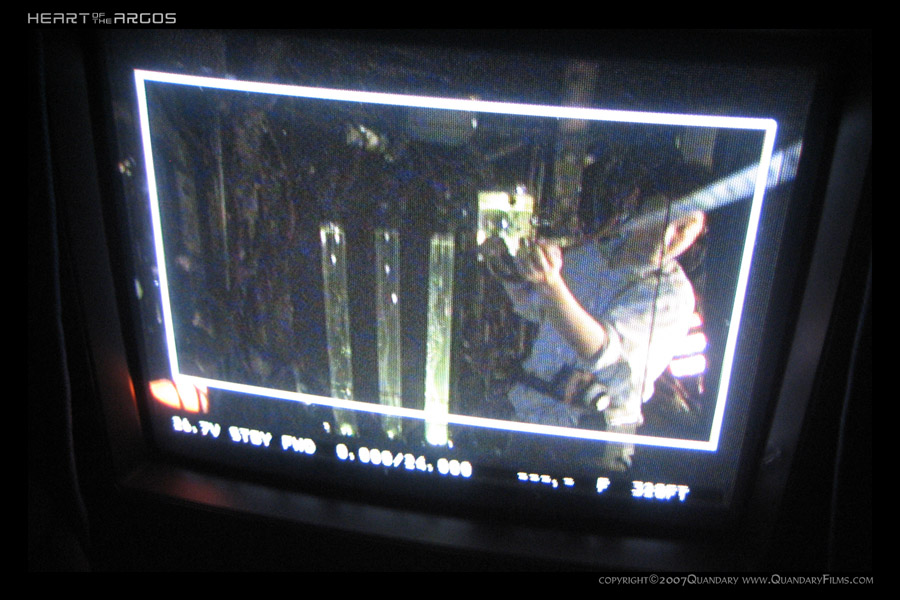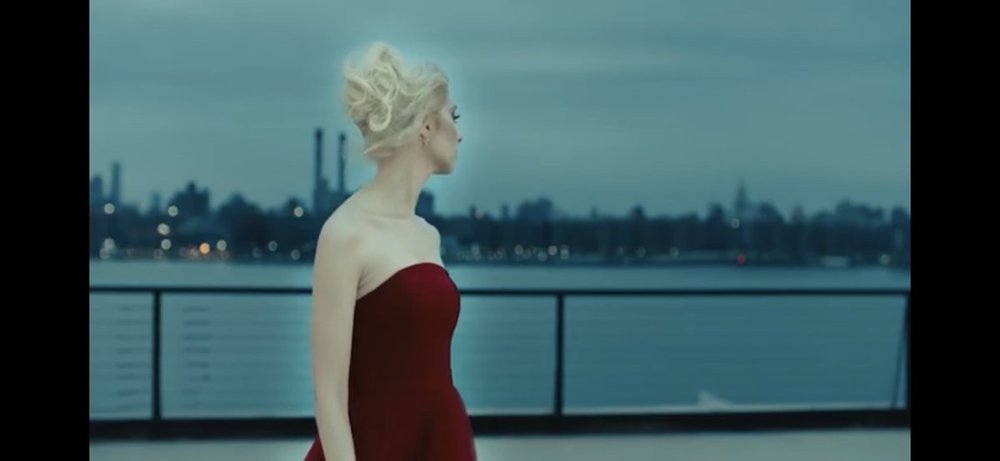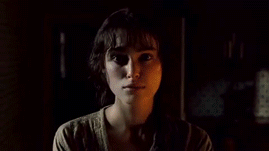-
Posts
4,560 -
Joined
-
Last visited
Everything posted by Satsuki Murashige
-
January works for me. We could decide on an era/director/genre and then do a poll for a specific film. It would be helpful if we chose from movies widely available on one of the streaming services.
-
When’s the next (Variable Focal Length) meeting?
-
Sure, there are times when it can work - ‘McCabe & Mrs. Miller’ is another good example. I do think it tends to work better in a dark movie theater with a large screen and surround sound, whereas on a 50” screen at home (even a calibrated one) I think it can often look like a post-production error or display calibration error - both because it happens frequently on low budget projects, and also because it’s so easy to change the display settings to something that looks more standard. But in a theater, the viewing experience simply is what it is, which I think encourages the viewer to just go with the flow. On the other hand, when I went to see ‘Carol’ in the theater I was the only person in there and the staff had left the lights on, assuming the theater was empty. I had to go find someone to turn them off after a few minutes. I don’t think that was an intentional part of the viewing experience that Todd Haynes and Ed Lachman wanted! I take your point about the emotional effect of straining to see in the dark, I do think there was some of that intention as well. Another thought would be the radio interference in the story taking over the film, sort of a progressive fogging of the ‘film stock.’ I only make this leap because of the post film grain applied - but if that were the case, then I think it should have been a bit more obvious, with a ramp up from normal black to fogged look with flashes and grain clouds as they get closer to the source.
-
Sorry, it was indeed Prime, not Netflix. I did what Bruce suggested and turned on the tv first, then the Amazon Fire Stick. Black levels still look inconsistent and heavily lifted. I think Justin is right - it could be an intentional choice, odd as that may be. Kinda ruined an otherwise well-made movie for me, but to each their own.
-
What was strange is that the end credits had normal black levels. I tried changing my tv settings back mid-crawl to see if they were affected and they were not. It was just so extreme in the scenes that weren’t lit with contrast or separation, that it really looked like something had gone wrong. I’ve been there before as a filmmaker at a screening, and it just makes you want to crawl into a hole when it happens. I thought maybe the studio had added a new end credits crawl with normal Rec.709 levels, while perhaps the movie itself was graded in P3 or something and the two were cut into the same file somehow, but Bruce’s explanation makes sense. Some scenes looked good on my tv with the adjusted black levels crushed, while other scenes where there was clearly supposed to be a hint of shadow detail we’re completely gone. So an HDR version playing on an SDR display would explain things. I’ll check it tonite when my living room is dark once more.
-
Hm, interesting. Thanks Bruce, I’ll test it out and report back.
-
I’m down!
-
I just watched this last week, really enjoyed the writing, directing, and camera operating - but what the hell was going on with the lighting and the color grade? Maybe it was just my Netflix stream, but the blacks were heavily lifted and for many scenes the only shadow detail was in the lifted toe. I do realize this was a very low budget self-financed film and there were budgetary and technological limitations to lighting all of the night exteriors, but I really want to know if the lifted backs was an artistic choice, or if maybe the Netflix execs just decided that nobody would sit thru the film if most of the frame was pitch black and made the call to radically re-grade the film? I ended up changing my calibrated tv settings to crush the blacks and it looked much better, though then I couldn’t see what was happening in quite a few scenes. Just a few edge lights and some low fill light would have helped immensely I think...
-

Questions for other DPs (About lighting)
Satsuki Murashige replied to Stephen Sanchez's topic in General Discussion
Re: recreating dappled light Found this awhile ago and forgot about it until today: https://www.dedolightcalifornia.com/collections/eflect Seems like it could be scaled up and possibly do the job? Very tempted to buy a minimal kit to try it out. -

Power draw on alexa classic? Figuring out how many batteries to get.
Satsuki Murashige replied to Berry Spinx's topic in ARRI
There should be maintenance guidelines for your battery model on the manufacturer’s website or in the packaging. Usually, with lithium batteries you’re supposed to charge them up every month or so they maintain full charge capacity. I’d check to see if there’s anything specific you should be doing. -
The space lights are already 5600K and not 3200K? That makes it pretty simple - set the camera to 3200K-ish and CTO/CTS gel on your key light to taste. Real tungsten light or at least a Bi-Color LED would probably look better, but you gotta use what you have. Just make sure to flag the space lights off of your subject if you don’t want blue overhead spill. Depending on how much grip equipment you have access to, it might be simpler to just get a blue seamless backdrop instead of mixing color temps.
-
It seems to me that you’re talking about lost opportunity costs - whether you could have made more net income by not buying gear that you didn’t use? I think that’s more of a business strategy discussion, rather than a simple accounting discussion. I’m just saying that from the accounting perspective of an owner-op or rental house, each line item in the inventory is supposed to generate its own return. If you own a C300Mk1, you should be charging a fair rental rate for it in addition to your labor rate (whether you wrap that up into a single rate for your client or not). If the camera has worked enough days to make its cost back, then it has paid for itself. You’re in the black with that particular line item from that point on. If you then buy an FS7, that’s new inventory. It should pay for itself in the same way, by being rented out when requested. The C300 hasn’t gone anywhere, it can continue to generate income as: 1. 2nd camera body on your job alongside the FS7. Pure profit, assuming you are charging for the 2nd camera (which you should always do). 2. Separate camera pkg rented to other productions. If you are also shooting another job with the FS7 on the same day, the C300 rental is passive income. Pure profit. 3. Sold. Pure profit. 4. Donated to a non-profit org. Tax write-off. Now, if you choose to do none of those things, ignore the financial numbers, or are unable to make your inventory work for you, then yes it’s probably a bad business move to buy the FS7. That doesn’t change how the accounting is supposed to work though.
-

Affordable Director's Finder
Satsuki Murashige replied to M Joel W's topic in Lenses & Lens Accessories
There are companies that make wide angle adapters for your mobile device’s lens. If you know the magnification factor (0.5x, 0.7x, etc.) then you can estimate what the focal length should be. Really though, I’m in the same camp as Stuart. Usually, you’re just trying to figure out if you need to rent a wider or longer lens that your usual package for a particular shot with a cheap viewfinder, not trying to line up a super-specific composition. And after a few times using that focal length with a particular camera, it just becomes intuitive. -
2020, in a nutshell: Here’s hoping that 2021 provides fewer plastic rings to the face.... Happy holidays to you all! ?
-

Chronicle Of A Camera (Arri II book) review
Satsuki Murashige replied to charles pappas's topic in General Discussion
I wouldn’t be surprised if they were forced to raise prices to cover expenses. A few people I know have published limited runs thru university presses, none of them to my knowledge made any profit from it. I’m happy to support the author and look forward to reading the book ? -

Chronicle Of A Camera (Arri II book) review
Satsuki Murashige replied to charles pappas's topic in General Discussion
Thank you Charles, looks very interesting - I just ordered a copy, can’t wait to read it! It was $35 with delivery for the paperback, they must have raised prices in the past few months. Still very reasonable for what I’m assuming is a small printing run from a university press. -

The Pretty Reckless - "25"
Satsuki Murashige replied to Phil Rhodes's topic in On Screen / Reviews & Observations
-

Affordable Director's Finder
Satsuki Murashige replied to M Joel W's topic in Lenses & Lens Accessories
I agree with Stuart and Dom, I used to have a cheapo Kish finder like that as well, gave it away a long time ago. It wasn’t very accurate to begin with, and now with all the different camera formats out there, it would be totally useless. Also, I think you will find over time that you’ll get very good as estimating focal lengths by eye if you stick to one camera and prime lenses. Now, a director’s finder with a camera-specific ground glass and PL mount is a whole ‘nother thing and very valuable for scouting, especially if you’re working with a director who is very specific about composition. I find it can really boost their confidence that you share their vision and make the shooting day run more efficiently. But that’s more of a rental item. -
I hear the term ‘natural skin tone’ a lot, and I think it’s worth examining in more detail exactly what that means to you. By itself, it’s a vague and subjective phrase - what is ‘natural’ to you may seem ‘stylized’ to someone else. I prefer David’s more concrete term ‘neutral skin tone’, which I interpret as ‘white balance and tint of the camera matched to the light source.’ So a 5600K lit scene shot with 5600K/0 tint is ‘neutral.’ If we can say that ‘neutral skin tone’ = ‘natural skin tone’, +/- a few hundred kelvins for a mild warm/cool color cast, then that sort of pushes you toward creating stylized color thru production design, wardrobe, and props rather than thru color temperature or color grading. Specifically in regard to this reference frame: I would not call this a teal/orange look, which I interpret as a color grading effect. This is just natural warm late afternoon sunlight plus cool ambient skylight - it looks natural because it is natural light.
-

Questions for other DPs (About lighting)
Satsuki Murashige replied to Stephen Sanchez's topic in General Discussion
Ah yes, that’s the shot I was thinking of. Great tip on the moonlight transition, thanks! -

Questions for other DPs (About lighting)
Satsuki Murashige replied to Stephen Sanchez's topic in General Discussion
Didn’t you have a shot like this for ‘Mrs. Maisel’? I seem to remember a circular dolly shot as the parents move out of the apartment transitioning from day to night, but maybe I’m mis-remembering. It would be interesting to also build in a lens iris rack so the depth of field gets shallower as it gets darker. Not sure if that would be distracting or not. I guess it’s a question of whether you want to just capture the feeling of transition from the character’s perspective, or whether you want a photographically realistic effect from the audience’s perspective. Artistic interpretation vs technical recreation... -

Questions for other DPs (About lighting)
Satsuki Murashige replied to Stephen Sanchez's topic in General Discussion
Ok, got another challenging scenario that I haven’t had the chance to try yet - the day to night in-camera lighting transition: Have you had a chance to light one? How did you do it?







